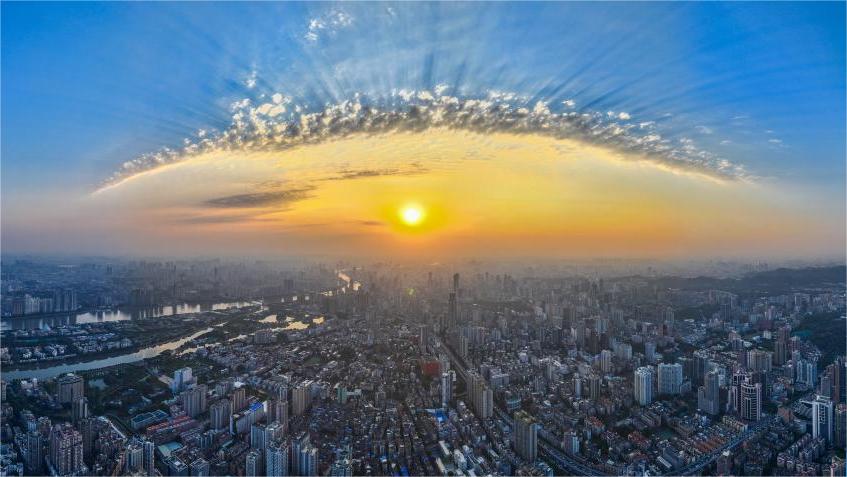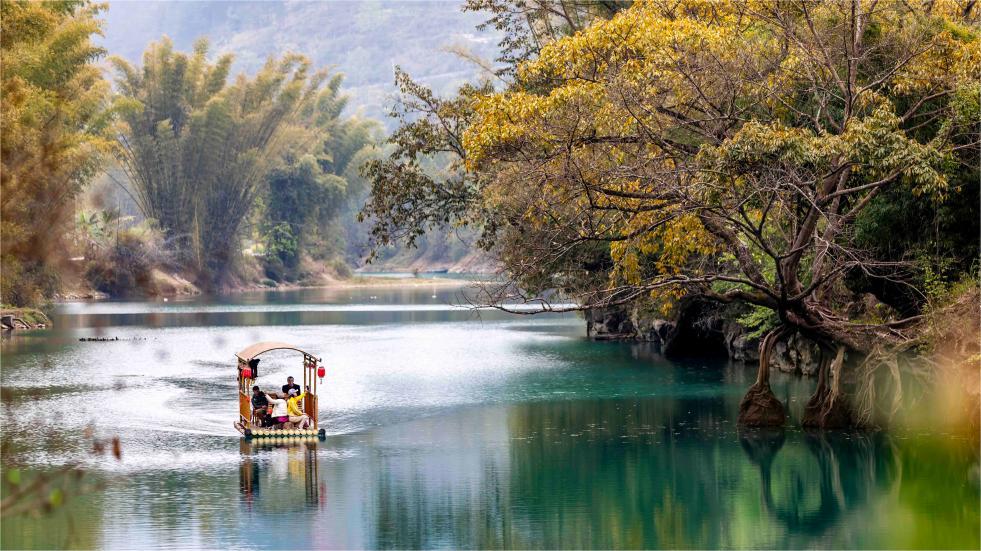Hyping tritium content in Chinese nuclear plant effluents just an attempt to divert attention: experts
Chinese experts have slammed claims in the Japanese media that the content of tritium in the liquid effluent discharged from Chinese nuclear power plants was higher than the annual emission limit of the treated water from the Fukushima nuclear power plant. They said it is clearly an attempt to shift public focus away from the Japanese side's reckless nuclear contaminated water discharge plan.
Nikkei Asia reported on March 9 that in 2022, Chinese nuclear power plants released wastewater containing tritium at levels up to nine times higher than the amount expected to be found in the planned annual discharge from Japan's crippled Fukushima Daiichi complex.
At a press conference on Tuesday, Chinese Foreign Ministry spokesperson Wang Wenbin responded to the report, saying that it is distorting facts and misleading the public. Wang noted that it is common sense that "the nuclear-contaminated water produced in the Fukushima accident is in nature different from the liquid effluent from normally functioning nuclear power plants around the world." He urged relevant media outlets to stop such unprofessional and irresponsible reporting.
The nuclear contaminated water discharged from the Fukushima nuclear power plant in Japan and the normal effluents discharged from nuclear power plants are completely different in terms of generation process and types of radioactive nuclides, a Chinese nuclear safety expert told the Global Times on condition of anonymity.
There is no currently suitable method or technology in nuclear power plants around the world to handle tritium in normal operation. The tritium produced by nuclear power plants in various countries will basically all be emitted, according to the expert.
The expert said that Japan is well aware that countries including the US and Europe cannot handle tritium, so they have raised tritium as a major issue in an attempt to divert attention and silence criticism of their reckless dumping plan.
However, the core issue is that tritium is not the most important isotope in the contaminated wastewater in Fukushima, nor is it the most harmful isotope to human health. In fact, there are many long-lived isotopes in Japan's nuclear-contaminated water, and focusing on tritium obscures more serious issues, the expert noted.
In July 2023, a spokesperson from the Ministry of Ecology and Environment (National Nuclear Safety Administration) responded to questions about the comprehensive assessment report on the disposal of nuclear-contaminated water from the Fukushima nuclear power plant released by the International Atomic Energy Agency, saying that in fact there are fundamental differences between the nuclear contaminated water from the Fukushima nuclear accident and the liquid effluents produced by normal operation of nuclear power plants in various countries.
The sources are different, the types of radioactive nuclides are different, and the difficulty of treatment is different. The nuclear-contaminated water from the Fukushima nuclear accident comes from the cooling water injected into the melted core after the accident, as well as groundwater and rainwater that seeped into the reactor and contain various radioactive nuclides from the melted core, making it difficult to treat, the ministry noted.
In contrast, the liquid effluent generated by the normal operation of nuclear power plants mainly comes from processed water and surface water, containing small amounts of fission nuclides, and strictly adhering to international standards. It is treated with the best available technology, and discharged in an organized manner after strict monitoring to meet standards, with emissions far below the specified control values.
Chinese nuclear power plants have always strictly adhered to international standards and have repeatedly set safety operation records, experts noted.
According to the data on the operation of nuclear power plants in China released by the China Nuclear Energy Association, as of December 31, 2022, China has a total of 55 operating nuclear power units (excluding those in Taiwan region), as well as 22 units under construction, and the operational units have maintained safe and stable operation. There have been no level 2 or higher operational events in the past 30 years. In 2022, China did not even have any level 1 or higher operational events, meaning there were no accidents involving radioactive releases, occupational hazards, or occupational overexposure. The safety level of operation ranks among the best in the world.
The latest report on the operation of nuclear power plants in China in 2023 also showed that, from January to December 2023, Chinese nuclear power plants strictly controlled the operational risks of the units, with the integrity of the primary loop pressure boundary and safety shell meeting technical specifications; there were no level 1 or higher international nuclear event scale (INES) operational events; no general or higher radiation accidents occurred; no major or higher production safety accidents occurred; no general or higher sudden environmental events occurred; and no occupational hazards or occupational overexposure accidents occurred.
The statistics on the release of radioactive effluents from operational nuclear power plants from January to December 2023 showed that the emissions were below the approved limits set by the National Nuclear Safety Administration. The environmental monitoring data for radiation from January to December showed that the environmental air absorption dose rates measured by the automatic monitoring stations around each operating nuclear power base were within the normal range, and no abnormalities caused by the operation of nuclear power units were detected, according to the report.
Photos
Related Stories
- Suspicions linger over safety of Japanese nuclear power plants after oil leakage following Noto quakes
- Outer dome of China's small nuclear reactor Linglong One installed
- Global bodies must stop Japan's water release
- Design for nuclear-powered ship unveiled
- Advisers call for nuclear to be included in green energy transition
- Comicomment丨Ocean in sorrow: influx of nuclear-contaminated wastewater
Copyright © 2024 People's Daily Online. All Rights Reserved.









